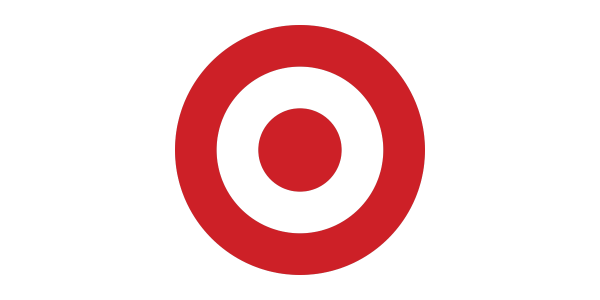Credit Card ABCs
September 22, 2003
Char Telkamp
Editor’s Note: This is part 1 of a two parts on dealing with credit cards. Next week we’ll look at what do when credit cards start controlling your life. The high cost of credit card debt.
Going to college means managing your own money – and credit card companies know it. So expect to be bombarded with applications for credit cards if you haven’t already. But before you send away for the magic plastic, ask yourself: Do you really need a credit card? It takes self-discipline not to spend beyond your means. Credit is important but needs to be handled wisely, knowingly and at the right time.
The Pro
There are some valid reasons for getting a credit card. A credit card can cover a few expenses while you wait for cash from your financial aid plan, part-time job or parents.
If your car breaks down while you’re traveling to campus, a credit card can be a lifesaver. Booking travel arrangements, like airfare home for the holidays, also becomes easier with credit.
Moreover, the credit card “loan” you get may be interest-free for nearly a month, since most banks allow cardholders a grace period to pay the balance.
A credit card also serves as a form of identification, even if you don’t use it for charging things. And if you always pay the balance on time, you establish a good credit record, which is critical for making future large purchases.
The Cons
Let’s look at the downside: A credit card can sometimes make shopping a little too easy. Large balances can build up quickly. You may suddenly find it takes all your extra cash just to make the minimum payments.
And credit is an expensive way to finance an education. Books worth $500, but bought with a credit card charging 18 percent interest, will eventually cost $865 – after seven years of making the minimum payment. (See the worksheet for more examples of the cost of using credit.)
If you still think a credit card is in your future, shop around. There are many different kinds of credit cards, each with their own terms and conditions. Do some research to compare costs, features and drawbacks before settling on a single card. It’s easier to do some checking now, than having to dig yourself out of a bad situation later.
Credit card companies are required to give you all the information you need to make an educated choice about the card being offered. Usually it’s contented within a boxed off section of the enclosed literature about the card. Things to compare
* Annual fees: Some cards charge an annual fee – anywhere between $15 and $50 – while others may not. May card issuers will waive the annual fee in the first year, then charge you a fee in a year or two. Banks will sometimes waive annual fees if you’ve charged a certain amount during the year or if you just ask.
* APR/Interest rate: The APR or interest rate is the percentage of interest you’re charged on the balance you carry on the card and cash advances (usually two different rates). It can either be fixed or variable (also called floating). A fixed rate APR is usually higher, but you’ll know what to expect for the year. A variable rate is typically lower, based on tan interest rate that swings up and down.
* Introductory rates: Some cards offer a super-low introductory rate that will later switch to a higher fixed or variable rate. Make sure you know how long the introductory rate lasts – usually three to nine months – and what the new rate will be. The introductory rate is often terminated if you send a late payment.
* Finance charge: This is the actual dollar amount you’ll pay when you carry a balance. It includes interest costs and any other transaction fees. It’s helpful to know how this number is calculated. The average daily balance method is the most common. It adds the amount of debt on your account for each day during the billing period and averages it.
* Grace period: Most credit cards offer a 25-day time period for you to pay off your total balance without paying a finance charge. The grace period runs from the date printed on the bill, not the date you receive it or the date you make a purchase.
These include fees for paying late ($20 to $25), charging over your limit ($20 to $25), and getting a cash advance (around $2 or 2 percent of the cash). Make sure you read the cardholder agreement, which disclosed these charges.
Other things that you should consider are whether you need cards that offer rewards, discounts, rebates or other benefits.
Because credit card companies are in competition for your business, many cards now offer added benefits, like rebates or discounts. Other cards earn you frequent flyer airline miles for each dollar charged. With these cards, find out how many dollars equal a free ticket and make sure the airline flies to places you want to go.
Special interest cards give you discounts or points toward purchases on particular items, such as golf or skiing equipment. Many cards offer extended warranties on purchases. Discounts and rebates are both appealing. Rebate cards refund you a percentage of your purchases, either by check or credit to your account. Discount cards reduce the price of certain purchases. The bonus with a discount card is that you keep your money now, rather than get it back later. But make sure the discounts are for items that you need or would normally purchase.
If you plan to pay your credit card bill in full each month, you should look for a card with no annual fee and a generous grace period. If you think you’ll carry a balance, then the important thing is a card with a low interest rate. If that means paying an annual fee, make sure the rate is low enough to make up for the annual fee.Applying online dos and don’ts
An increasing number of cards are being offered online. It seems convenient, but there are some things you should do to avoid being conned. Never apply if there is no specific bank mentioned. It may be a ploy to gather your personal information for other purposes. If a bank is named, check for an address and phone number. If none is listed, move on. Also, never send personal data through an unsecured Web site. And always look for hidden costs, such as exorbi





















